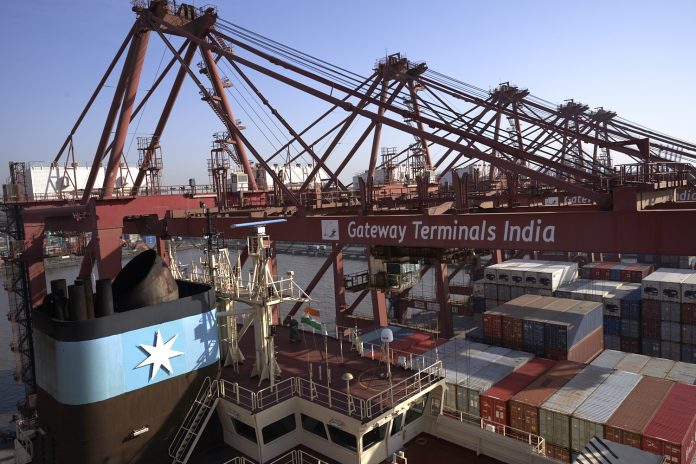Despite witnessing a lethal second wave, India seems to have gotten its external trade in control slowly and steadily. Even as the global freight rates rose by over 300% in the last year, shipping lines repositioned containers to curb the deficit of boxes and high turnaround time of vessels left Indian exporters high and dry in the middle of the Diwali festivities due to shortage of containers.
Discussing India’s container situation, Maritime Gateway with its knowledge partner Drewry conducted the Containers India 2021 webinar last week highlighting ‘Post Pandemic Era: Rebound & Refocus’ with industry experts.
Talking about the new normal in container trade, Captain Deepak Tiwari, Managing Director of MSC Agency (India) and the chairman of Container Shipping Lines Association (India) said, “the shipping lines are trying to maintain service levels despite the fact that there is port congestion in practically all the US ports both on the West as well as the East Coast. There is congestion in the European ports, in Southeast Asia and Australia too. We have landed ourselves in a situation where more than 300 container ships globally are actually waiting for berths. This could be anything from 3-4 days up to 12 days of pre-berthing delays.”
According to a report, 8% of the total shipping capacity was waiting at ports for berths in April 2021 which rose to 12.5% of the shipping capacity in August 2021 that is 3.2 million TEU waiting to be berthed, discharged and reloaded from various ports. This also means that the 3rd or the 4th top shipping company laying up their fleet.
International freight forwarder Shantanu Bhatt Kanker had an opposite view on shipping liners’ situation. “The shippers are facing a huge problem because they did not have a strategy in place for their supply chain resilience. India needs to increase its physical exports and not just export services. India’s new infrastructural development which has been named multi-modal is just an aggregation of segmented transport assembled together and presented as one. It is not a seamless multi-modal,” he commented.
CEO of Allcargo Logistics India, Suresh Kumar termed this situation as a ‘perfect storm’ while mentioning what the container crisis has taught the different stakeholders in the industry. Kumar said India needs to focus on its infrastructure that includes container supply chain, construction of ports and utilization of ports.
“We need to look at how we can reduce our dependency on ships. There is a need to focus on sustainability and environment, phasing out of energy inefficient vessels, putting in place new technology to come up with right solutions for customers and collaboration between all maritime industry stakeholders,” added Kumar.
Captain Tiwari spoke about how India can come out of this container logjam. “The number of shipyards has gone down from 514 to 278 in 2021. The lead time to build a ship has increased from 9-10 months to 14 months. In addition, there is a waiting period for your order to start manufacturing. This has increased the lead time to bring new ships into the system. Now over 4 million new box manufacturing orders have been placed that too with an increased lead time from 4-10 months.”
Captain Tiwari went on to point out that “the new boxes have started coming in and the shipping lines have started using the new boxes. The new buildings will start coming in in the first quarter of 2022 and continue till the first quarter of 2023. However, the kneejerk solutions could be to ship a boat and drop it at an uncongested port, find new routes and ship the cargo via rail or road to its destination.”
He also noted that shortage of containers is really not an issue but the space crunch on-board vessels are becoming difficult to solve.
“It is a bit of a gamble for shipping lines like us,” highlighted Zeeshan Mukhi, Director of Customer Experience at Maersk (Southeast Asia). “We are in the dark as to how the future demand will pan out. We are hearing about near sourcing and regional growth that might negatively impact the shipping lines in future but the need of the hour is to get capacity and that’s what the shipping lines are doing.”
The industry experts also discussed near sourcing wherein India is considering boosting its manufacturing and bolstering its image on the world platform as the next best option as a global supplier competing with China.
However, experts believe that it’s a long shot and competing with China needs a lot of ‘sincerity’. In fact, Bangladesh and Vietnam are becoming the preferred destinations for sourcing.
Sheuly Ghosh
India Correspondent







